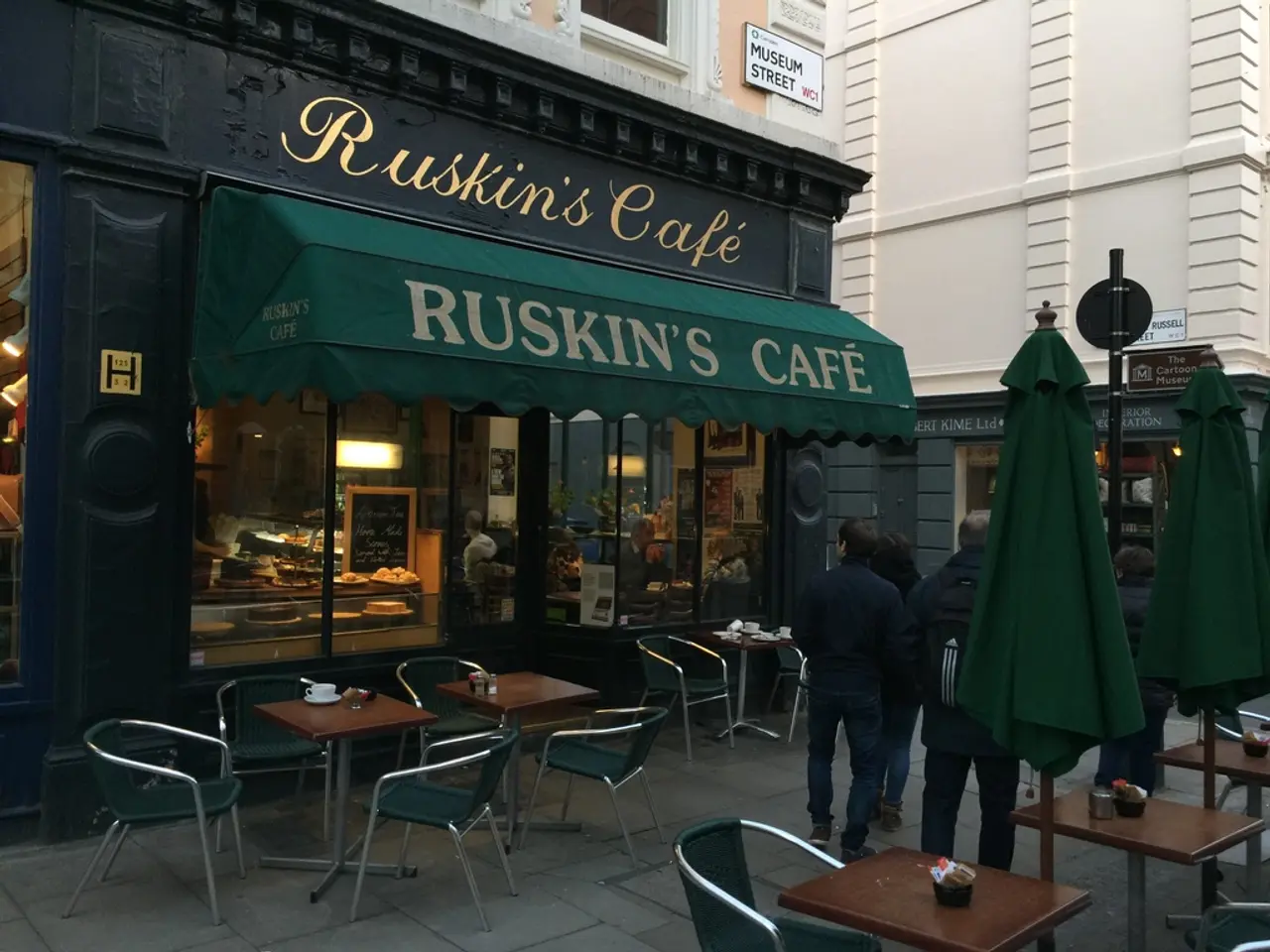Eada is searching for a sunlit location or establishment
In a notable shift, Russia's major cities, particularly Moscow, are witnessing a significant growth and increasing popularity of summer dining terraces. This trend, which includes rooftop restaurants and outdoor dining areas in new commercial real estate developments, is a testament to the rising demand for open-air leisure spaces connected to commercial and office properties.
According to recent data, 30% of new office buildings under construction in Moscow include terrace spaces, signifying the increasing preference for outdoor dining and leisure areas. Neighborhood centers in the city are also actively expanding their rooftop terraces and leisure offerings, with multiple summer terraces opening on the roofs of these centers. These spaces cater to a variety of activities, including outdoor fitness, entertainment, and dining experiences.
This broader movement towards integrating open-air terraces into mixed-use urban developments is enhancing consumer experiences during the warmer months. For instance, on Piatnitskaya Street, the number of seating places in street cafes increased by 62%, while on Novy Arbat, it rose by 24%. However, the trend is not limited to these streets alone, as the total number of catering points with verandas or outdoor seating in million-plus cities exceeded 17,000 in July 2025, marking a 40% year-on-year increase.
Alena Boldyreva, an expert in the field, notes that summer verandas in regions with a mild climate remain active until late October, while in Siberia, they are sensitive to weather changes. This adaptation to local climates underscores the versatility of this trend.
Grigory Arutynyan, head of client routes for the "Anderson" network, states that a terrace can provide up to 30-40% of a venue's revenue during the summer months. Inside such cafes, there are usually almost no seating places indoors, so they use any opportunity to expand the area, including by installing summer cafes.
The Department of Trade and Services of Moscow reported that the number of street structures was over 5,000 at the beginning of spring, up from slightly over 4,000. This increase is not only due to new locations but also the development of verandas in residential areas.
However, Grigory Arutynyan also lists challenges in coordinating summer verandas, including differences in local regulation, longer coordination periods, and sometimes the absence of clear regulations. Despite these hurdles, the growth in the number of verandas may be connected with the active development of street food points and small establishments.
The trend of increasing the number of summer dining terraces is not limited to Moscow, but is also observed in other major Russian cities such as St. Petersburg, Sochi, and Krasnodar. In fact, the largest increase was recorded in Krasnoyarsk, where the number of summer verandas grew by 79.5%, followed by Perm (59.4%) and Moscow (47.7%).
This surge in outdoor dining spaces is a reflection of a wave of urban development prioritizing outdoor spaces like summer terraces, rooftop restaurants, and leisure clusters, driven by lifestyle preferences for open-air dining and multifunctional social areas in Russia's major cities.
- home-and-garden: The increasing preference for outdoor dining and leisure areas in new office buildings under construction in Moscow signifies a growing demand for residential areas with verandas or outdoor seating.
- food-and-drink: The Department of Trade and Services of Moscow reported an increase in the number of street structures, which includes cafes with verandas or outdoor seating, indicating a popular trend of open-air dining in major Russian cities.




